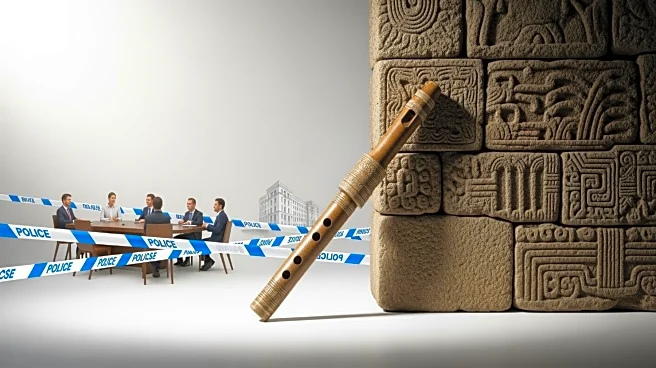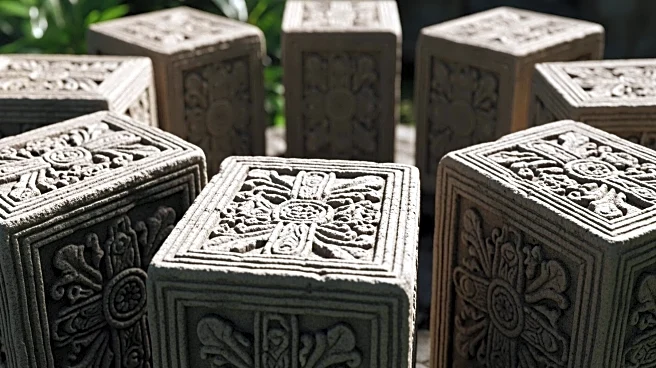What's Happening?
In Huaytará, Peru, researchers are examining the acoustic properties of a unique Incan structure known as the carpa uasi. This three-walled building, which forms the foundation of the Church of San Juan
Bautista, is believed to have been designed to amplify low-frequency sounds, such as drumming, with minimal reverberation. The study, led by Stella Nair, associate professor of Indigenous arts of the Americas at UCLA, aims to understand the sonic values of the Incas, who were known for their impressive stonework and architectural innovations. The carpa uasi, meaning 'tent house,' is the only known surviving structure of its kind, preserved under the church for over 600 years. Researchers are developing models to demonstrate how sound would have traveled through and beyond the carpa uasi, highlighting the importance of sound in Incan architecture.
Why It's Important?
This research sheds light on the cultural significance of sound in Incan architecture, challenging the traditional focus on visual elements. By understanding the acoustic properties of the carpa uasi, scholars can gain insights into the values and priorities of the Incan civilization, which extended across South America's western coast during the 15th and early 16th centuries. The study emphasizes the need to consider all sensory experiences when interpreting historical contexts, potentially altering perceptions of ancient societies. This could influence future archaeological and anthropological research, encouraging a more holistic approach to studying past civilizations.
What's Next?
The research team plans to continue developing models to better understand the acoustic dynamics of the carpa uasi. These models could provide further evidence of the Incan emphasis on sound and its role in their architectural designs. As the study progresses, it may prompt other researchers to explore similar acoustic properties in ancient structures worldwide, potentially leading to new discoveries about historical societies and their sensory environments.
Beyond the Headlines
The investigation into the carpa uasi's acoustic properties highlights broader implications for how sound can influence architectural design and cultural practices. It raises questions about the ephemeral and impermanent aspects of architecture that are often overlooked. This research could inspire modern architects to incorporate acoustic considerations into their designs, recognizing the importance of sound in shaping human experiences and interactions within built environments.













